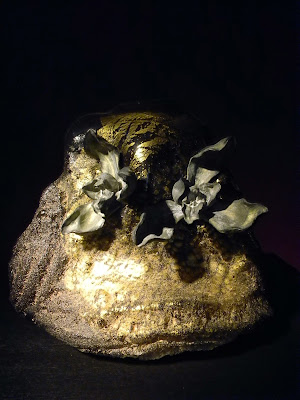I have always loved Chinese art. I have spent many hours at the Minneapolis Institute of Arts and the Chazan Museum in Madison staring at the paintings, marveling at the flow and ease with which the paintings are made. In fact, the beautiful and completely unintelligible Chinese calligraphy that always appeared with the paintings I admired was a major part of the reason why I began studying Chinese.
My second semester at UW-Madison, I had the opportunity to enroll in a special course where Professor Wei Dong taught students the fundamentals of Chinese design and painting. This was honestly one of the best courses I have ever taken. Wei is a wonderful, talented, and kind teacher, very patiently guiding us through the steps of creating a painting, and making us the most delicious and authentic Chinese food I had ever eaten.
Chinese brush painting may look effortless, but in reality it is the most difficult painting method I have ever come across. Each stroke must be deliberate, fluid, and precise. There is no masking of mistakes, only adapting them to make other forms. The pigments on the page are an intensely controlled combination of pressure, speed, angle, color, water, and the texture of the paper. We both realized very quickly that I would probably never be able to make a good painting, but what I could grasp were the concepts behind Chinese design. I instinctively understand what makes my paintings terrible and what makes other paintings masterpieces, and I can see these same concepts applied in fabric, jewelry, pottery, gardening, and architecture. And I love it.
This past weekend I stumbled across three small museums and art galleries that held some of the greatest art I have seen throughout my stay in China. I first wandered into a tiny museum dedicated to the artist Ren Weiyin. Born to a wealthy family, he was taught to paint by Westerners just as the Impressionist style was being developed. Over the course of his lifetime, he developed a personal style that blended Western Impressionism with traditional Chinese painting methods. He created a very successful art studio and was relatively successful, until the Cultural Revolution shook China. He was forced to give up painting and become a shoe cobbler for seventeen years. Finally, during the 1960's and 1970's he was allowed to take up painting again, and began an inspiring series on Chinese life.
Photography wasn't allowed in the little gallery, but here are some pictures of his work that I've found online. His work is some of the best I have ever seen, and the pictures below are hardly representative of everything he has created.
After exploring this little gallery for a while, and chatting with the two very nice Chinese art students who were working there, I stumbled upon another museum across the street.
This was dedicated to the Chinese Liuli art. Liuli is a traditional glass blowing technique, which until now I have never heard of before. What I saw inside was absolutely stunning, never in my life have I wanted to learn how to do glass blowing more than I do right now.
These photos hardly even do the art pieces justice. They were absolutely gorgeous.
Also displayed alongside the art were a few poems; this one was my favorite:
Finally, I wandered into a photography studio called XMJ Photography. The place was swarming with European tourists asking stupid questions, but the photographs were so cool, that I really didn't mind. These are the types of photos that I aspire to one day create:


























No comments:
Post a Comment